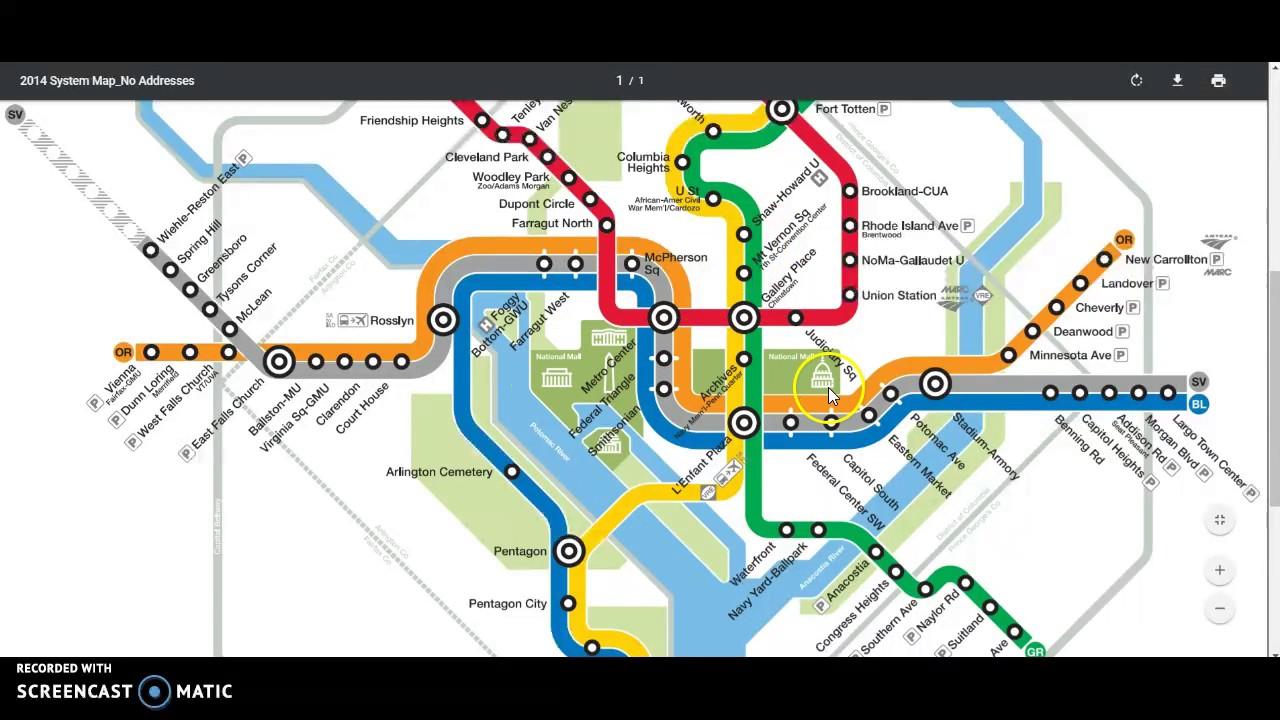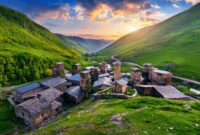DC Trip Planner offers a comprehensive guide to crafting the perfect Washington D.C. vacation. Whether you’re a history buff, an art enthusiast, or a nightlife aficionado, this planner provides detailed itineraries, transportation options, accommodation choices, and budget recommendations to ensure a memorable and well-organized trip. We’ll cover everything from exploring iconic landmarks to discovering hidden gems, helping you navigate the nation’s capital with ease and efficiency.
From meticulously planned itineraries catering to diverse interests and time constraints to insightful advice on navigating the city’s transportation system and selecting suitable accommodation, this planner leaves no stone unturned. We delve into the best attractions, culinary delights, and budgeting strategies, empowering you to tailor your experience to your preferences and budget.
Popular DC Attractions
Washington, D.C. boasts a wealth of iconic landmarks and museums, offering a captivating blend of history, culture, and art. Planning your visit requires careful consideration of the numerous attractions available, each with its unique appeal and historical significance. This section details ten must-see destinations to help you craft the perfect D.C. itinerary.
Top Ten Must-See Attractions in Washington, D.C.
The following list presents ten prominent attractions, providing details on their historical significance, visitor information, and accessibility. Opening hours and ticket prices are subject to change, so it’s always advisable to check the official websites before your visit.
- National Mall: A sprawling National Park serving as the heart of Washington D.C., the Mall is home to many monuments and museums. It’s free to visit, open 24/7, and highly accessible with paved walkways and wheelchair ramps throughout.
- National Air and Space Museum: Showcasing the history of aviation and space exploration, this Smithsonian museum offers free admission, is generally open daily from 10:00 AM to 5:30 PM (check for specific holiday closures), and features excellent accessibility features for visitors with disabilities.
- Lincoln Memorial: This iconic marble monument honors Abraham Lincoln, a pivotal figure in American history. Access is free and available 24/7. The site is largely accessible, with ramps leading to the memorial.
- Washington Monument: A towering obelisk offering panoramic city views (reservations for elevator access are highly recommended and can be booked well in advance). Ticket prices vary, and accessibility is limited due to the height and the elevator’s capacity.
- National Museum of Natural History: This Smithsonian museum explores the natural world, from dinosaurs to gems. Admission is free, and it’s generally open daily from 10:00 AM to 5:30 PM (check for holiday closures). The museum offers excellent accessibility, including wheelchair rentals and assistive listening devices.
- White House: The official residence of the President of the United States. While tours are available by request through your Member of Congress, public access is limited for security reasons.
- National Gallery of Art: Housing a vast collection of art from various periods and cultures, the Gallery offers free admission and is generally open daily from 10:00 AM to 5:00 PM (check for holiday closures). It offers excellent accessibility features, including wheelchair access and audio guides.
- International Spy Museum: This engaging museum explores the world of espionage with interactive exhibits. Ticket prices apply, and hours vary; check their website for details. Accessibility features are available.
- United States Holocaust Memorial Museum: A poignant and powerful museum dedicated to the victims of the Holocaust. Admission is free, but timed passes are required and can be reserved online in advance. Accessibility is well-provided for.
- Jefferson Memorial: A neoclassical monument honoring Thomas Jefferson, a founding father of the United States. Access is free and available 24/7. The memorial offers good accessibility with paved pathways.
National Mall Image Description
The image depicts the National Mall, a vast green expanse stretching from the Capitol Building to the Lincoln Memorial. The Washington Monument stands prominently in the center, its obelisk piercing the sky. Various other monuments and museums are visible in the background, showcasing the Mall’s role as a significant historical and cultural center. The image conveys the grandeur and scale of the Mall, a testament to American history and democracy. The wide open spaces and well-maintained lawns are visible, suggesting a peaceful and accessible environment for visitors. The presence of people strolling along the pathways adds a sense of scale and the vibrant atmosphere of the location.
Food and Drink in DC
Washington, D.C. boasts a vibrant and diverse culinary scene, offering a wide array of dining options to suit every taste and budget. From Michelin-starred restaurants to casual eateries, the city caters to both discerning palates and those seeking a quick and satisfying meal. Exploring the food scene is an integral part of experiencing the city’s rich culture and history.
Diverse Culinary Experiences in DC
The District’s culinary landscape reflects its multicultural population and history. You’ll find everything from classic American fare with a modern twist to authentic international cuisines. Many neighborhoods offer unique culinary identities, providing a variety of dining experiences within a short distance. This variety ensures that visitors can discover something new and exciting with each meal.
Popular Local Food Options and Unique Dining Experiences
Beyond the well-known restaurants, Washington, D.C. offers many unique dining experiences. Food trucks offer a diverse range of cuisines at affordable prices, often found near popular attractions and parks. Farmers’ markets showcase local produce and artisanal goods, providing opportunities for picnic lunches or unique culinary discoveries. Additionally, many neighborhoods host food festivals throughout the year, celebrating the city’s rich gastronomic diversity. These events offer a chance to sample a wide variety of dishes and beverages, creating memorable culinary adventures.
Restaurants Categorized by Cuisine Type
The following table provides a curated list of restaurants categorized by cuisine type, offering a diverse range of price points and culinary experiences. This list is not exhaustive, but it offers a starting point for your culinary exploration of Washington, D.C.
| Name | Cuisine | Price Range | Location |
|---|---|---|---|
| The Dabney | American | $$$ | Shaw |
| Fiola Mare | Seafood | $$$$ | Georgetown |
| Le Diplomate | French | $$$ | Logan Circle |
| Rasika | Indian | $$$ | Penn Quarter |
| Little Serow | Thai | $$ | Shaw |
| Oyamel Cocina Mexicana | Mexican | $$ | Penn Quarter |
| Succotash | American | $$$ | Penn Quarter |
| Rose’s Luxury | American | $$ | Capitol Hill |
Note: Price ranges are represented as follows: $ = Inexpensive, $$ = Moderate, $$$ = Expensive, $$$$ = Very Expensive. Prices are subject to change.
Budgeting for a DC Trip
Planning a trip to Washington, D.C. requires careful consideration of expenses. This section provides sample budgets to help you estimate costs for your visit, depending on the length of your stay and your travel style. Remember these are estimates, and your actual costs may vary.
Sample Budget Breakdown
The following table provides a sample budget breakdown for 3-day, 5-day, and 7-day trips to Washington, D.C. These figures are averages and can fluctuate based on the time of year, your choice of accommodation, dining preferences, and planned activities. Consider these figures as starting points for your own personalized budget.
| Trip Length | Transportation (per person) | Accommodation (per person) | Activities & Food (per person) |
|---|---|---|---|
| 3 Days | $300 (including flights if applicable, local transport) | $450 (mid-range hotel) | $600 (including meals, attractions, and souvenirs) |
| 5 Days | $400 (including flights if applicable, local transport) | $750 (mid-range hotel or Airbnb) | $900 (including meals, attractions, and souvenirs) |
| 7 Days | $500 (including flights if applicable, local transport) | $1050 (mid-range hotel or Airbnb) | $1200 (including meals, attractions, and souvenirs) |
Transportation Costs
Transportation costs will vary greatly depending on your origin and method of travel. Flights can range from a few hundred dollars to over a thousand, depending on the time of year and your departure city. Within D.C., consider using the city’s excellent public transportation system (Metro), which is significantly cheaper than taxis or ride-sharing services. Walking is also a great option for exploring many parts of the city. Budget for potential costs associated with airport transfers, train tickets, or ride-sharing apps.
Accommodation Costs
Accommodation costs can range from budget-friendly hostels to luxurious hotels. Hostels can be a cost-effective option, particularly for solo travelers, while hotels offer varying levels of comfort and amenities at different price points. Consider booking accommodations in advance, especially during peak tourist seasons, to secure better rates and availability. Airbnb is another popular option offering a wider range of choices and potential cost savings.
Activities and Food Costs
The cost of activities and food will depend on your preferences. Many of D.C.’s most popular attractions, such as the National Mall and Smithsonian Museums, are free. However, you may choose to participate in paid tours, visit ticketed attractions, or enjoy fine dining experiences, all of which will increase your budget. Planning your meals ahead can also significantly impact your food costs. Packing some snacks and utilizing affordable food options can help keep costs down. Consider setting aside a daily budget for food and activities.
Creating a Realistic Budget
To create a realistic budget, start by determining your trip length and travel style. Consider your preferences for accommodation, dining, and activities. Then, research the average costs for each category based on your choices. Utilize online travel agencies and comparison websites to find the best deals on flights and accommodation. Finally, add a buffer for unexpected expenses. For example, a 10-20% contingency fund is recommended to account for unforeseen circumstances. By meticulously planning and accounting for potential costs, you can create a realistic and manageable budget for your Washington D.C. trip.
Creating a Personalized Itinerary
Crafting the perfect Washington, D.C. itinerary hinges on understanding your personal interests and travel style. A successful trip isn’t just about ticking off landmarks; it’s about creating an experience tailored to your preferences, ensuring you maximize your time and enjoy every moment. This involves careful planning and prioritization to create a memorable and fulfilling trip.
The process begins with self-reflection. What aspects of D.C. intrigue you most? Are you a history buff eager to explore museums and monuments? A foodie looking to sample diverse culinary delights? An art enthusiast seeking out galleries and cultural events? Or perhaps a combination of these interests? Once you identify your priorities, you can start building a framework for your itinerary.
Prioritizing Attractions and Allocating Time
Effective time management is crucial for a smooth and enjoyable trip. Begin by listing all the attractions that align with your interests. Then, research the average time needed for each activity. Consider factors such as opening hours, potential wait times, and your preferred pace of sightseeing. For example, allow ample time for larger museums like the National Museum of Natural History, which could easily consume a half-day or more, while smaller sites might only require an hour or two. Remember to factor in travel time between locations, whether by walking, public transportation, or taxi. A realistic timetable prevents feeling rushed and ensures you can fully appreciate each experience.
Utilizing Online Planning Tools
Numerous online tools can significantly simplify the itinerary-building process. Websites like TripAdvisor, Google Maps, and even the official websites of DC attractions provide valuable information on opening hours, ticket prices, reviews, and directions. These platforms often offer interactive maps, allowing you to visualize your route and estimate travel times. Consider using a digital calendar or a dedicated trip-planning app to consolidate your schedule, bookings, and important information in one place. This centralized approach ensures you stay organized and avoid missing key details.
Step-by-Step Guide to Building a Customized DC Itinerary
- Identify Interests: Clearly define your priorities – history, art, food, etc.
- Research Attractions: Compile a list of potential attractions based on your interests. Use online resources to gather information about each site.
- Estimate Time Requirements: Research opening hours and typical visit durations for each attraction. Account for travel time between locations.
- Prioritize and Sequence: Organize your attractions based on proximity and desired experience. Group similar activities together to optimize your time.
- Allocate Time Slots: Assign specific time slots to each activity in your itinerary. Be realistic and allow for flexibility.
- Integrate Bookings and Transportation: Book tickets in advance where necessary and plan your transportation (walking, metro, taxi, etc.).
- Review and Refine: Review your itinerary and make adjustments as needed. Consider incorporating buffer time for unexpected delays.
Example Itinerary: History Buff
Let’s imagine a history enthusiast with three days in DC. A possible itinerary could include: Day 1: National Mall (Lincoln Memorial, Washington Monument, World War II Memorial), National Archives Museum. Day 2: Smithsonian National Museum of American History, National Museum of Natural History. Day 3: Ford’s Theatre, International Spy Museum. This itinerary allows for a deep dive into American history and culture, with a balance of iconic monuments and detailed museum experiences. Remember to check opening hours and potentially book tickets in advance, especially during peak season.
Final Conclusion
Planning a trip to Washington D.C. can be overwhelming, but with the DC Trip Planner, you’ll be equipped with the knowledge and resources to create an unforgettable experience. By carefully considering your interests, budget, and travel style, you can craft a personalized itinerary that seamlessly blends historical exploration, cultural immersion, and exciting nightlife. Embrace the convenience and thoroughness of this guide to unlock the full potential of your Washington D.C. adventure.




